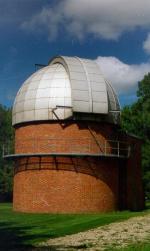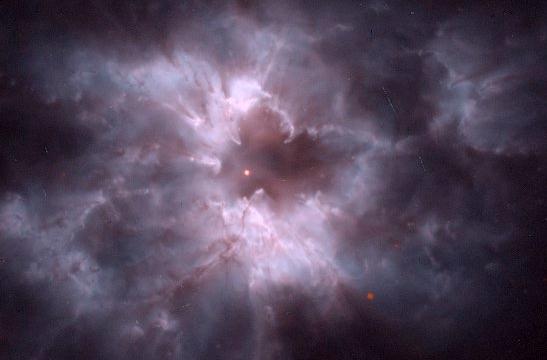| Warner and Swasey Observatory |
| Case Western Reserve University | Nassau Station |
| Visitors |
|
» Home » News » Gallery » Reference » Weather |
| Science Resources |
|
» NSRT User Interface » Software » Data Archive » Download Data |

|
 |

White dwarfs are very strange types of stars. They are the degenerate remains of smaller stars which simply dwindle away as time progresses becoming less and less luminous all the while. There is not enough pressure to blow up the star, and it will not get hot enough to burn elements beyond carbon, so it just dies off in a pretty haze of gas.
| White dwarfs are made up, almost entirely, of ionized carbon and oxygen, and little to no hydrogen. Most are about the same mass as our Sun, but smaller (sometimes several orders of magnitude smaller) than the Earth. Obviously, this means that white dwarfs are incredibly dense. So dense, in fact, that a teaspoon of white dwarf material would weigh over 16 tons on Earth, and almost 500,000 times that on the surface of the star. They range in temperature from 5000-80,000 K, which means that they actually come in many colors, not just blue-white. Since they spin quickly (conservation of angular momentum) and generate a lot of energy, they light up the hydrogen and helium that they have expelled from their outer shells. The result is known as a planetary nebula, even though it has nothing to do with planets. It is just a very diffuse gas, but it is brightly lit by the white dwarf progenitor that blew it away. | ||||||||||||||||
|---|---|---|---|---|---|---|---|---|---|---|---|---|---|---|---|---|---|
It is possible for a white dwarf to have a very dramatic ending to its life, if it happens to be a member of a binary system. This means that there are two stars orbiting one another. About half the stars that we observe are in binary systems, so this is a fairly common state in which to observe stars. There are three different types of novae that can occur if the accretion rate onto the white dwarf is not constant or gets too high.
| |||||||||||||||||
Back
photograph: H. Bond (STSci), R. Ciardullo (PSU), WFPC2, HST, NASA.
Created by Marta Lewandowska, July 1999.
©1999 CWRU Astronomy Dept.
comments
Last modified July 1999
Case Western Reserve University
